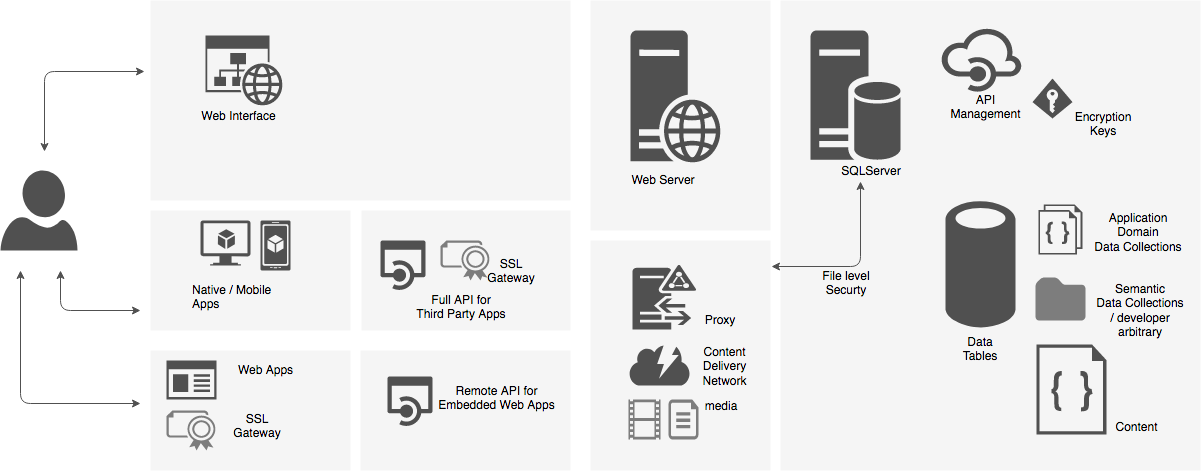The cloudbust engine
Cloudbust is a cloud middleware that handles fully managed cloud resources and services. It is designed for senior back-end engineers and architects and it is the result of ongoing development. In simple words, every time we find something challenging in any of our projects’ backends we update the solution on Cloudbust. In this way, all of our cloud back-end / platform projects start with the latest cloud state-of-art at their disposal from day one.
Functionality
CloudBust is an Orchard Framework fork with extended functionality which includes application developer platform services that empower developers to build web applications that act as a full featured backend.
-
Database
- Availability: 99.99%, Automatic backups, Point-in-time restores, Active geo-replication, Auto-failover,
- Built-in intelligence: Automatic performance monitoring and tuning, Adaptive query processing
- Advanced security and compliance: Data Discovery & Classification, Vulnerability Assessment, Threat Detection
- Auditing for compliance and security
- Data encryption
- Active Directory integration and multi-factor authentication
-
Modules
- Logic Apps: supporting orchestration of business processes, workflows and more.
- Service Bus: providing reliable enterprise messaging
- Event Grid: which allows raising and delivering events.
- Device Connectors: that allow direct and real-time connections with end-user devices, particularly with ones that provide data streams, such as medical devices with sensors for health monitoring purposes
- Mobile apps SDKs: particularly for the iOS and the Android mobile phones / devices
- Web API infrastructure: for basic Web API calls
-
Web API
Cloudbust provides back-end features for front-end applications via a REST full API. The API serves clients via an authentication ruleset. Overall Security and Application domain calls are provided. Several business case API calls are also provided to cover a wide spectrum of end-user use cases.
Authentication for the app is given by the Login API call. This returns a hash-key for the application. along with the user's profile. The hash-key can be used for consequent authentication calls, provided that it is stored under a active server-side session. THe hash-key based authentication call is provided by the LoginHASH API call.
-
Features

-
Architecture

-
Example Use Case: Healthcare

